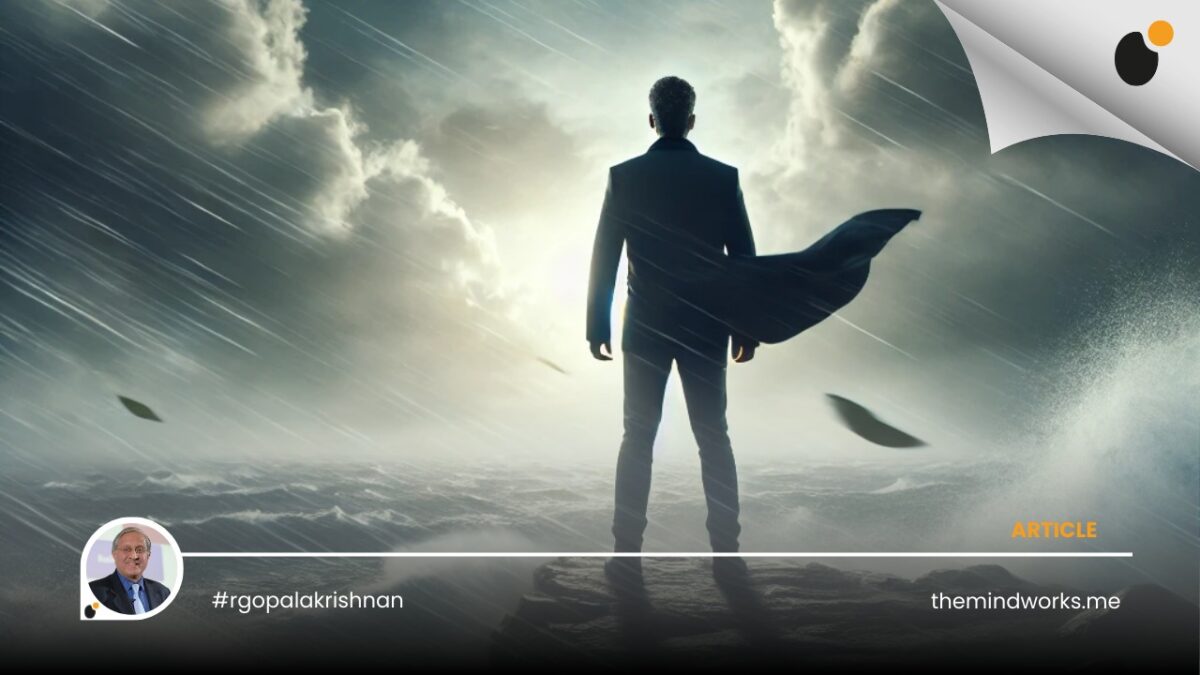*The writer is an author. His latest book, JAMSETJI Tata—powerful learnings for corporate success, coauthored with Harish Bhat, was published in July 2024. His email ID is rgopal@themindworks.me
While change is undoubtedly accelerating exponentially, the tools to cope with the change are also accelerating exponentially. Perhaps the gap is constant.
Most of us are convinced that we are living amidst never-before turbulent times. It is true, but only partially. What do we mean when we say ‘never-before turbulence’? When Covid occurred, it was seen as a ‘once in a century’ event. When partition occurred in 1947, it was a ‘once in a civilization’ event.
Think back to your parents’ and grandparents’ times. Did they not sincerely believe that their times were turbulent? Contemporary futurologists and visionaries persuade us that AI, ESG, EV, quantum computing, alternate energy, and a myriad other developments will change our lives irreversibly. Leaders naturally feel challenged, if not stressed. The perception of challenge and stress may be more manageable if leaders could remember that times were always turbulent.
Historian Ian Mortimer’s book, Centuries of Change (2015), takes you on a whirlwind tour of the last ten centuries and pits one century against the other to explore which century saw the greatest change—a complex and subjective exercise. If I had to summarize the findings of the book, it is that the answer depends on how you look at it. In medicine, it may be one century (think anesthetics), while in travelling to new lands (think ships), it may be another century. If turbulence of change is measured by number of people impacted (printing press), then it is one century, but if it is by amount of money spent (space travel), it may be another. Is it likely that each generation views its own period as being the most turbulent? Most likely, yes.
On the flip side, it must be noted that the tools for people to cope with change have also improved dramatically. For example, keeping track of when a relative from another city or village would arrive at your home, say two hundred years ago, was vastly different from the tools one would use today. While change is undoubtedly accelerating exponentially, the tools to cope with the change are also accelerating exponentially. Perhaps the gap is constant.
Then why all this fuss and dire warnings about ‘Change or Perish’, ‘Move Fast’, and ‘Break Things’?’ It is intriguing to consider the question that if the challenge to cope with turbulent times has been so over centuries, what should people obsess about? The turbulence of change? Or the gap between the change and the tools to cope with the change? In my recent book, Embrace the Future (Bloomsbury, 2024), I have considered what an organizational response could be. However, that is not the point of this article.
This article is (and perhaps a few future ones) about leadership in turbulent times. Leadership is about human activity, not about intellectual and cognitive activities; it is about relational and inspirational activity. It is about being aware and intuitive rather than rational and analytical. The fact is that our brain has evolved far less compared to technology; our brain resembles much more the brain of our ancestors, quite unlike the many other turbulent changes that we experience.
It is appropriate and correct to reflect on the technological changes, but it is equally important to remember that it is through the lagging human brain that we can successfully adapt to the change. I wonder whether the ‘phase lag’, to use an electrical engineering jargon, between technology and brain change gets as much attention during leadership training courses. For leaders in business and management, apart from technological changes, leaders need to comprehend and adapt to organizational turbulence caused by mergers, acquisitions, downsizing, restructuring, and other such activities. I would like to focus on these kinds of turbulences as I write this column.
That the subject merits commentary and debate is evident by happenings around us. We see the case of a promoter-chairman colluding with the CEO and CFO of his listed company to siphon off funds into hidden crevices (CG Power). We see the downfall of a much-celebrated start up founder, going crazy about growth through acquisitions and reorganizations (Byju). We read about a racy financier with a criminal past buying bonds and stocks through cooked-up valuations and concealing matters from the regulator (H2O). We learn that Mars, a confectionary company, acquired Kellanova, a snacks company, for an astronomical sum, which may well turn out to be great, but which puts both company employees into uncertainty for several months, maybe even years.
There are complication with leadership succession. Consider Starbucks, which has ‘run through’ three or four CEOs in just six years. Increasingly, the CEO is hired and tasked by boards as through he or she is a prima donna, a genius who can raise stock prices quickly, who can quickly bring order to a colossal disorder that has developed over decades, who can manage the ambiguity of a former CEO who ‘will not go away’ while the board pretends to delegate autonomy.
There are acquisition and merger turbulences that the contemporary CEO must cope with. Reflect on the unfortunate death of Mike Lynch, a central person in the Autonomy-HP acquisition of 19th August 2011, when HP acquired Autonomy for about USD 11 billion. After one year, HP fired CEO, Leo Apotheker, for having overpaid for the acquisition. Then HP began legal processes against Autonomy leaders. Autonomy Chief Financial Officer, Sushovan Hassan, was jailed. Autonomy financial executive, Steve Chamberlain, and chief executive, Mike Lynch, faced legal processes in USA for twelve years. The court did not uphold charges against them.
One day before the thirteenth anniversary of the sale, co-defendant Steve Chamberlain died when a car hit him in UK. One day after the anniversary, Mike Lynch sank to his death in a tragedy that occurred to his sailing boat.



